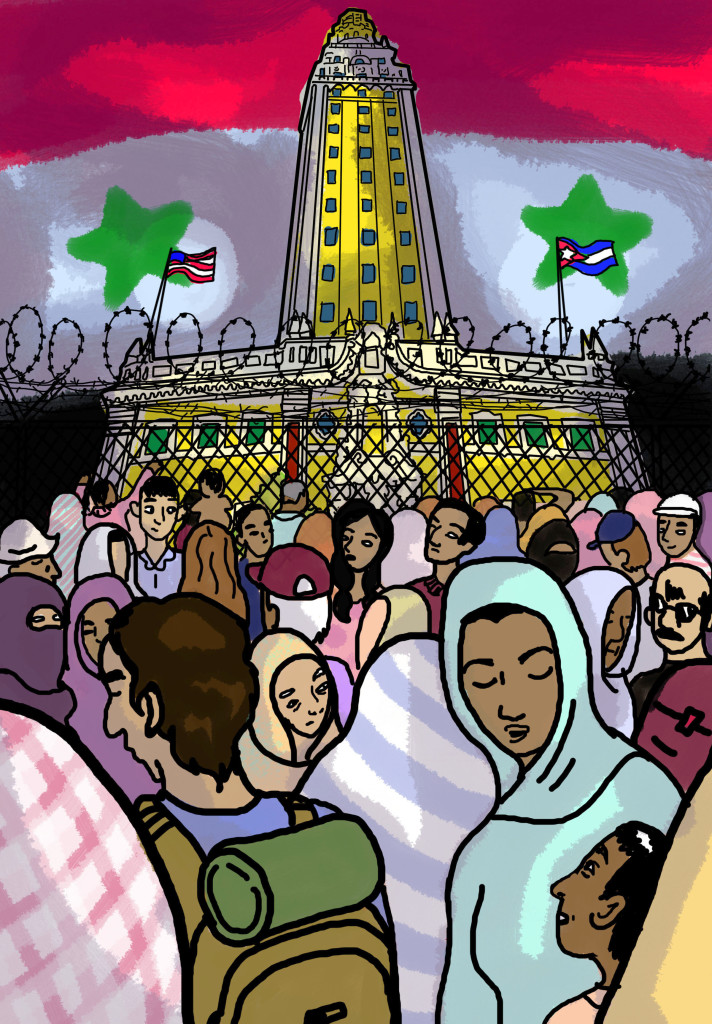The Similarities Between Cuba And Syria

Across the United States, citizens are contemplating whether or not the U.S. should accept Syrian refugees. However, no matter what stance you take on the issue, it is hypocritical for Cuban Americans to be opposed to the settlement of Syrian refugees. The parallels between the Syrian refugee crisis and the Cuban exodus justify efforts to settle Syrian refugees into the U.S.
The similarities between the two groups are obvious. Syrians are currently trying to escape from the violent, authoritarian rule of ISIS, an organization whose tactics (mass murder, state controlled media) bear resemblance to the acts of the 26 of July movement that put Castro in power. Both these organizations arose in areas heavily influenced by the United States, ISIS seizing power after the U.S. retreated from Iraq, and the 26 of July Movement exploiting the weaknesses of the U.S. backed Batista regime. Syrian refugees, like the Cuban refugees, want to enter the U.S. to flee from persecution.
The differences between the two groups are harder to identify. Some may argue that the fear of a violent extremist posing as a refugee was never apparent in the Cuban migration. Eighteen-year old Ronald Hernandez, an undecided major at Kendall Campus, who supports the admission of Syrian refugees, says that he has never heard “of any extremist Cubans that did anything to harm others.”
However, the majority of Cuban immigration took place during the Cold War. Seeing as how Cuba had been the center of a nuclear crisis and was a staunch ally of the Soviet Union, the fear of Cuban spies or Soviet trained sleeper cells must have been apparent in an anti-communist obsessed nation such as the U.S.
The fear of extremists amongst Syrian refugees is no more justified than the fear of soviet spies posing as Cuban immigrants, especially since, according to the Migration Policy Institute, only three out of the 784,000 refugees admitted into the U.S. since 9/11 have been implicated in terrorist activities of any kind, roughly 0.0004 percent of the refugees. In comparison, despite some being criminals and mental patients released by Castro, the U.S. accepted 125,000 Cuban refugees during the Mariel Boatlift.
The U.S’s response to both refugee crises has differed. Rather than barring Cubans from entering the U.S., our nation welcomed them. The Migration Policy Institute states that 1.1 million Cuban immigrants currently live in the U.S. In contrast, FactCheck.org states that only 2,290 Syrian refugees (out of 4.2 million) have been accepted into the United States since 2011.
Seventy one percent of Miami Dade College students are Hispanic. A good majority of those students are Cuban. As a community of refugees, exiles of our homeland, we need to embrace Syrians fleeing from the Islamic State. They cannot go back home, for the same reasons that we cannot go back to Cuba. For Syrians seeking asylum in the U.S., our decision to let them settle can mean the difference between setting foot on shore and being adrift at sea, with no land in sight.



